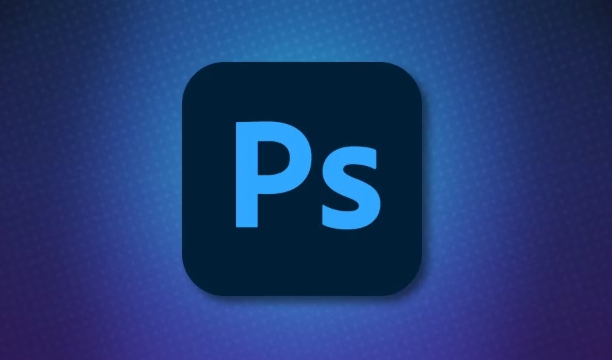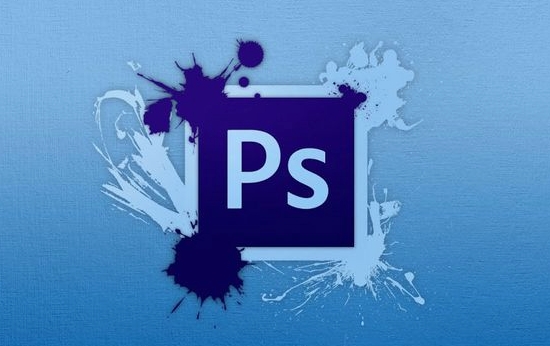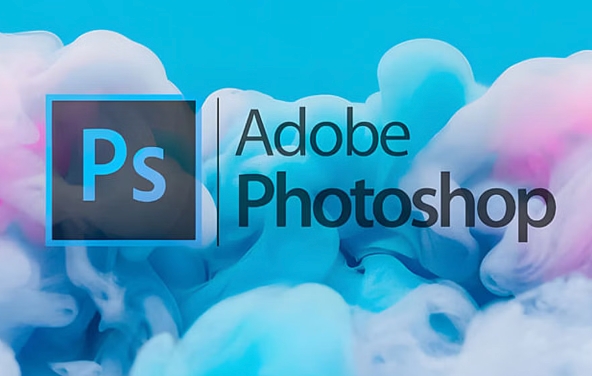Mastering the key techniques of Photoshop liquefaction tools can improve the photo editing effect. 1. The method to open the liquefaction tool is to click "Filter" > "Liquefaction" or use the shortcut keys Shift Ctrl X (Windows) or Shift Command X (Mac). 2. The core settings include brush size, density and pressure. It is recommended that the brush be slightly larger and the pressure is set to about 50% to achieve a natural transition. 3. Common uses include slimming the face, adjusting the shape of the eyes and mouth, and smoothing the skin. When operating, you should use a small brush to gently handle it and enlarge the preview details. 4. Methods to avoid errors include avoiding excessive deformation, making good use of reconstruction tools, copying layers in advance, and realizing that liquefaction is not a omnipotent thing to use with other tools. Reasonable use of liquefaction tools can make the photos more natural and beautiful.

Photoshop's liquefaction tool (Liquify) is a powerful tool that many people will use when editing photos, especially in adjusting the facial contours of characters, slimming their faces, and elongating their eyes. But many newbies tend to over-operate when using it, or don’t know where to start. In fact, as long as you master a few key points, you can use them naturally and efficiently.

1. Basic ways to open the liquefaction tool
Turning on the liquefaction function in Photoshop is very simple:

- Select the layer you want to edit first
- Click Filters > Liquefaction in the menu bar
- Or directly press the shortcut key
Shift Ctrl X(Windows) orShift Command X(Mac)
After entering the liquefied interface, you will see a brush-like tool, which is the default "forward deformation tool", and is also the most commonly used one. Other tools such as expansion, contraction, distortion, etc. can also be tried as needed, but it is recommended to focus on mastering this main tool at the beginning.
2. Core settings of liquefaction tools: brush size and pressure
Many people feel that the effect is not obvious when using liquefaction tools for the first time, or they accidentally turn it over, which is often because the brush parameters are not adjusted properly.

There are several key settings below the left toolbar:
- Brush size : Try to choose a size that is slightly larger than the area you want to adjust, so that the transition is more natural
- Brush density : controls the concentration of the influence range, default is 100%
- Brush pressure : This determines the "force" you apply to the image when you drag the mouse. It is generally recommended to set it to about 50%, which is convenient for slowly adjusting.
A small trick is: If you want to make partial fine adjustments, such as just moving the bridge of the nose, you can turn the brush a little smaller and gently push the edge line.
3. Common uses and operation suggestions
Face slimming / Change face contour
This is one of the most common applications. Use the "Forward Deformation Tool" and just push the side edge of the face a little inward. Be careful not to push too hard, otherwise it will be distorted. You can try it a few more times, adjust it slightly each time, and preview the overall effect.
Elongate the eyes/adjust the mouth
It is also practical to use liquefaction to slightly widen your eyes and make the corners of your mouth rise a little. Also remember to use a smaller brush for gentle movements. You can enlarge the picture (using a magnifying glass in the upper left corner of the liquefied interface) to see the details clearly.
Smooth skin/softize contours
If you want to make your skin look smoother, you can use the "Smoothing Tool" to gently apply the defective areas. But it is not omnipotent, and you have to cooperate with other methods if you want to have more fine skin polishing.
4. Tips to avoid common mistakes
- Don't adjust too much at a time : the essence of liquefaction is to move the pixels. Adjusting too hard will cause obvious deformation of the image, and even blur or jagged feeling.
- Use the "Rebuild" function appropriately : If you feel that a certain step is wrong, you can use the "Rebuild Tool" to undo some of the changes.
- Copy the layer first : It is best to copy the original layer before the operation, so that you can restore it if you are not satisfied.
- Liquefaction is not omnipotent : some details, such as light and shadow, and unreasonable structure, cannot be solved by liquefaction alone, and other tools may be required to cooperate with the treatment.
Basically these are the key points. If the liquefaction tool is used well, it can make the photos look more natural and attractive, but you should also pay attention to the right degree and avoid excessive modification. You may not be very skilled at the beginning, and you will find the feel when you practice a few more times.
The above is the detailed content of How to use the liquify tool in Photoshop. For more information, please follow other related articles on the PHP Chinese website!

Hot AI Tools

Undress AI Tool
Undress images for free

Undresser.AI Undress
AI-powered app for creating realistic nude photos

AI Clothes Remover
Online AI tool for removing clothes from photos.

Clothoff.io
AI clothes remover

Video Face Swap
Swap faces in any video effortlessly with our completely free AI face swap tool!

Hot Article

Hot Tools

Notepad++7.3.1
Easy-to-use and free code editor

SublimeText3 Chinese version
Chinese version, very easy to use

Zend Studio 13.0.1
Powerful PHP integrated development environment

Dreamweaver CS6
Visual web development tools

SublimeText3 Mac version
God-level code editing software (SublimeText3)

Hot Topics
 How to undo multiple times in Photoshop
Jun 28, 2025 am 12:08 AM
How to undo multiple times in Photoshop
Jun 28, 2025 am 12:08 AM
In Photoshop, continuous undoing of multiple steps can be achieved through three methods. First, use the "History" panel and click any step to fall back to this state; second, press the Alt Ctrl Z (Windows) or Option Command Z (Mac) shortcut keys to gradually undo; third, create a "snapshot" to save the key state so that it can be restored at any time. Among them, mastering the "History" panel and undo shortcut keys can meet daily photo editing needs.
 How to flatten a PDF in Adobe Acrobat?
Jun 30, 2025 am 12:05 AM
How to flatten a PDF in Adobe Acrobat?
Jun 30, 2025 am 12:05 AM
Retaining layer information when exporting PDFs can cause compatibility issues, and flattening can resolve this issue. Use the "Pre-press Check" tool of Adobe AcrobatProDC to flatten the PDF with one click, which is suitable for most cases; 1. Open the PDF, click "Tools" > "Pre-press Check" on the right; 2. Click the gear icon, select "Flat Page Content", and confirm and save the file. Advanced users can manually adjust settings: 1. Create a new configuration file and check "Flat Transparency" in "Repair"; 2. Set the resolution and apply the configuration. After flattening, you should pay attention to problems such as larger file size, reduced editing, and text conversion to pictures. It is recommended to keep the original copy for modification.
 How to send a document for signatures with Adobe Acrobat Sign?
Jul 02, 2025 am 12:44 AM
How to send a document for signatures with Adobe Acrobat Sign?
Jul 02, 2025 am 12:44 AM
The steps to send documents for others to sign with Adobe AcrobatSign are as follows: 1. Prepare the final version of the PDF file. If there is no PDF, you can upload it to other formats to automatically convert it, and ensure that the content is correct; 2. Create a new signing process after logging in, add recipient information and set the signature location, assign permissions to each signer, and adjust the signing order; 3. Optionally set email reminders, deadlines and signature methods to improve signing efficiency; 4. Send the document after confirming that it is correct, track the signing status through the system in real time, and download a copy or resend a reminder to complete the signing process.
 How to enable the Adobe Acrobat extension in Chrome?
Jul 02, 2025 am 12:51 AM
How to enable the Adobe Acrobat extension in Chrome?
Jul 02, 2025 am 12:51 AM
To solve the problem that Chrome browser cannot preview PDFs online, 1. Install the official Adobe Acrobat extension; 2. Enter the extension page to make sure it is enabled and set to allow incognito mode to run; 3. Turn off the built-in PDF reader option in Chrome settings to set it to be opened by default with Acrobat; 4. If you encounter a prompt "Managed by Organization", you need to contact the administrator to handle it. After completing the above steps, you can directly view PDF files in your browser.
 Why are my lines not showing up in AutoCAD?
Jul 01, 2025 am 12:04 AM
Why are my lines not showing up in AutoCAD?
Jul 01, 2025 am 12:04 AM
Problems are usually caused by layer settings, viewport display, line-type scale, or graphic refresh. 1. Check whether the layer is closed or frozen, and confirm that the color is different from the background; 2. Use ZOOMEXTENTS in the viewport to ensure that the geometry is within the visual range; 3. Adjust the LTSCALE value to fix the linear scale abnormality; 4. Check whether there are color output restrictions in the printing style sheet; 5. Try the REGEN command or switch the visual style to solve the graphics rendering problem. Check the reasons in order to quickly locate the reasons.
 How to create a neon effect in Photoshop
Jul 02, 2025 am 12:16 AM
How to create a neon effect in Photoshop
Jul 02, 2025 am 12:16 AM
The key to making neon light effects in Photoshop lies in the matching of layer style and overlay method. The specific steps are as follows: 1. Use "Inner Glow" and "Gradial Overlay" to create basic luminescence, select neon tones and adjust parameters to simulate the brightness of the lamp; 2. Add "Outer Glow" and combine "Gaussian Blur" to enhance the three-dimensional sense of the halo; 3. Improve the texture by adding noise to make the effect closer to the real neon; 4. Use dark backgrounds, projections and atmosphere materials to enhance the overall visual impact.
 How to make an image look old in Photoshop
Jul 02, 2025 am 12:47 AM
How to make an image look old in Photoshop
Jul 02, 2025 am 12:47 AM
To make pictures look age-like in Photoshop, you need to imitate the characteristics of old photos and master the key steps. First, add warm tones to increase yellow and red to reduce blue by Color Balance, or use Gradient Map to select brown and yellow gradients and adjust blending mode and opacity. Secondly, adding texture and noise can be used to control the values ??using the Add Noise filter, or overlay old photo textures and set blending mode. Again, make scratches and edge wear to download scratch maps as layers and adjust positions and modes, or use built-in filters to simulate effects. Finally, pay attention to moderate processing, use adjustment layers and masks to facilitate modification, and appropriately reduce contrast to make the picture softer and more natural.
 How to colorize a photo in Photoshop using neural filters
Jul 02, 2025 am 12:33 AM
How to colorize a photo in Photoshop using neural filters
Jul 02, 2025 am 12:33 AM
When using neural network filters to color photos in Photoshop, you need to pay attention to key steps and details. First, make sure that the software version supports this function, log in to the Adobe account and download and install the filter plug-in; then open the "Smart Coloring" option, and let the AI ??automatically finish the coloring after downloading the model; then check the results, use the brush tool, local application filters or combined with desaturation to manually color the error area; finally, after confirming that the effect is correct, export and save, it is recommended to keep the two versions of the AI ??layer and the final product. Although the entire process is simple, you need to pay attention to network connection, model loading and post-adjustment techniques.






